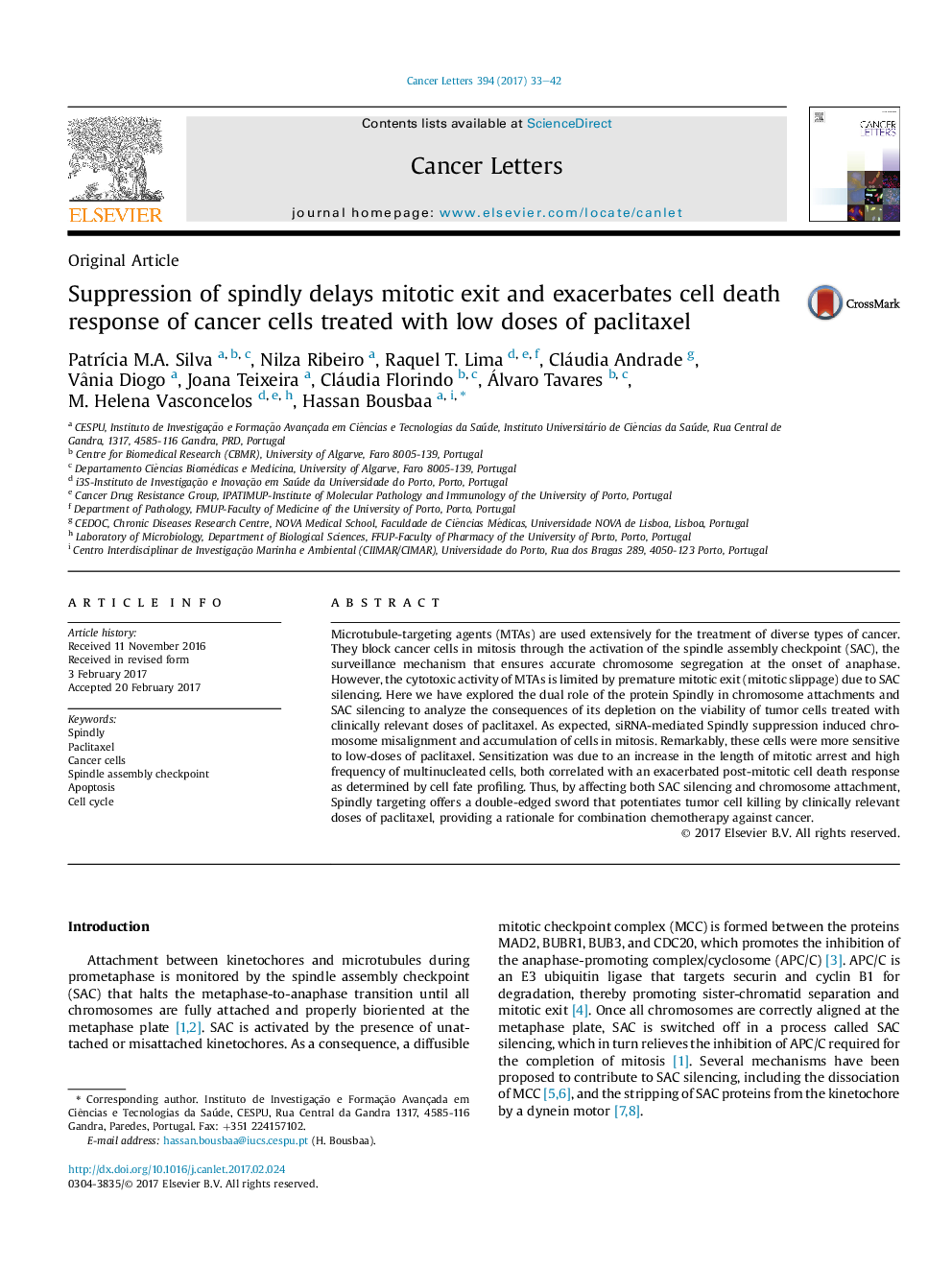| Article ID | Journal | Published Year | Pages | File Type |
|---|---|---|---|---|
| 5525637 | Cancer Letters | 2017 | 10 Pages |
â¢Spindly inhibition shows a strong cytotoxic activity in lung cancer cells.â¢Spindly inhibition enhances the efficacy of low doses paclitaxel.â¢Spindly inhibition shifts paclitaxel-based treatment to post-mitotic cell death.
Microtubule-targeting agents (MTAs) are used extensively for the treatment of diverse types of cancer. They block cancer cells in mitosis through the activation of the spindle assembly checkpoint (SAC), the surveillance mechanism that ensures accurate chromosome segregation at the onset of anaphase. However, the cytotoxic activity of MTAs is limited by premature mitotic exit (mitotic slippage) due to SAC silencing. Here we have explored the dual role of the protein Spindly in chromosome attachments and SAC silencing to analyze the consequences of its depletion on the viability of tumor cells treated with clinically relevant doses of paclitaxel. As expected, siRNA-mediated Spindly suppression induced chromosome misalignment and accumulation of cells in mitosis. Remarkably, these cells were more sensitive to low-doses of paclitaxel. Sensitization was due to an increase in the length of mitotic arrest and high frequency of multinucleated cells, both correlated with an exacerbated post-mitotic cell death response as determined by cell fate profiling. Thus, by affecting both SAC silencing and chromosome attachment, Spindly targeting offers a double-edged sword that potentiates tumor cell killing by clinically relevant doses of paclitaxel, providing a rationale for combination chemotherapy against cancer.
